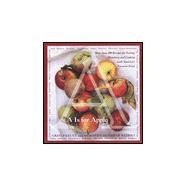
| Acknowledgments | p. ix |
| Preface | p. xi |
| Our Favorite Fruit | p. 1 |
| Apple Basics | p. 5 |
| Ingredients | p. 25 |
| Pies and Tarts | p. 29 |
| Desserts | p. 62 |
| Cakes | p. 94 |
| Cookies | p. 114 |
| Breads | p. 122 |
| Soups and Salads | p. 145 |
| Seafood and Game | p. 163 |
| Poultry | p. 173 |
| Beef, Pork, and Lamb | p. 198 |
| Side Dishes | p. 215 |
| Apple Thises 'n' Thats | p. 231 |
| Growing Your Own Apples | p. 249 |
| Mail-Order Sources | p. 261 |
| Bibliography | p. 265 |
| Index | p. 267 |
| Table of Contents provided by Syndetics. All Rights Reserved. |
The New copy of this book will include any supplemental materials advertised. Please check the title of the book to determine if it should include any access cards, study guides, lab manuals, CDs, etc.
The Used, Rental and eBook copies of this book are not guaranteed to include any supplemental materials. Typically, only the book itself is included. This is true even if the title states it includes any access cards, study guides, lab manuals, CDs, etc.
Excerpted from A Is for Apple: More Than 200 Recipes for Eating, Munching and Cooking with America's Favorite Fruit by Greg Patent
All rights reserved by the original copyright owners. Excerpts are provided for display purposes only and may not be reproduced, reprinted or distributed without the written permission of the publisher.